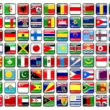Are you dreaming of salsa dancing, vintage cars, and pristine beaches? Cuba, with its rich history and vibrant culture, is undoubtedly a destination that tops many travel lists. However, choosing the best time to visit this Caribbean gem can significantly impact your overall experience. In this guide, we’ll walk you through the different seasons, events, and factors to consider when planning your trip to Cuba.
Table of Contents
- Introduction
- Cuban Climate at a Glance
- Peak Tourist Season: December to May
- Shoulder Seasons: September to November and June to August
- Low Season: Hurricane Concerns
- Festivals and Events Throughout the Year
- Budget-Friendly Travel Tips
- Exploring Cuba’s Beaches
- Immersing in Cuba’s Culture
- Culinary Delights: A Food Lover’s Paradise
- Safety and Practical Tips
- Getting Around in Cuba
- Packing Essentials for Your Cuba Trip
- Conclusion
- Frequently Asked Questions
Introduction
Cuba, a land of contrasts and charisma, welcomes travelers with open arms year-round. But, to ensure a memorable and comfortable journey, understanding the island’s climate and the unique events of each season is crucial.
Cuban Climate at a Glance
Cuba enjoys a tropical climate with two distinct seasons: the dry season and the wet season. The dry season, lasting from November to April, offers pleasant temperatures, clear skies, and lower humidity. On the other hand, the wet season, spanning from May to October, brings occasional showers and higher humidity levels.
Peak Tourist Season: December to May
The months from December to May constitute the peak tourist season in Cuba. During this time, the weather is at its best, making it ideal for exploring cities like Havana and Trinidad, lounging on the iconic Varadero Beach, and enjoying water sports. However, expect higher prices and larger crowds during this period.
Shoulder Seasons: September to November and June to August
The shoulder seasons present a balanced option for visitors. From September to November, the weather is still pleasant, and the tourist rush has slowed down. June to August, though warmer and more humid, offers a chance to witness Cuba’s lively culture without the peak season’s hustle and bustle.
Low Season: Hurricane Concerns
The low season, primarily in September and October, overlaps with the hurricane season. While this might deter some travelers, it’s worth noting that hurricanes are not guaranteed. If you’re willing to take a slight risk, you might find great deals and a more authentic experience.
Festivals and Events Throughout the Year
Cuba’s cultural calendar is packed with events that can enhance your visit. From the vibrant Carnival in Santiago de Cuba (July) to the world-renowned Habano Cigar Festival (February), there’s always something happening. The colorful parades, lively music, and traditional dances showcase Cuba’s lively spirit.
Budget-Friendly Travel Tips
Traveling to Cuba on a budget is possible with the right strategies. Opt for “casas particulares” (private homestays) instead of hotels for an authentic experience and lower costs. Enjoy delicious meals at local “paladares” (family-run restaurants), and consider using public transportation for an immersive journey.
Exploring Cuba’s Beaches
Cuba boasts some of the Caribbean’s most stunning beaches. Varadero’s powdery sands, Cayo Coco’s turquoise waters, and Playa Ancón’s tranquil beauty are just a few examples. Whether you’re a beach bum or a water sports enthusiast, Cuba’s coastline has something for everyone.
Immersing in Cuba’s Culture
The heart of Cuba lies in its rich culture. Engage with locals in lively salsa clubs, explore UNESCO World Heritage Sites, and delve into the nation’s revolutionary history. Don’t miss the chance to interact with warm and friendly Cubans who are eager to share their stories.
Culinary Delights: A Food Lover’s Paradise
Cuban cuisine is a fusion of Spanish, African, and Caribbean flavors. Indulge in classic dishes like “ropa vieja” (shredded beef) and “moros y cristianos” (black beans and rice). Experience the vibrant food scene at local markets and family-owned eateries.
Safety and Practical Tips
Cuba is generally safe for travelers, but it’s essential to take regular precautions. Keep your belongings secure, drink bottled water, and be cautious while crossing the street. Familiarize yourself with local customs and basic Spanish phrases to enhance your experience.
Getting Around in Cuba
Navigating Cuba can be an adventure in itself. Renting a vintage car adds a nostalgic touch to your journey. Additionally, the Viazul bus network connects major cities, offering a budget-friendly mode of transportation. Remember that internet access might be limited outside major cities.
Packing Essentials for Your Cuba Trip
Pack according to the season of your visit. Light and breathable clothing, sunscreen, a hat, insect repellent, and any necessary medications are must-haves. A power adapter and a Spanish phrasebook can also come in handy.
Conclusion
In conclusion, Cuba’s charm is ever-present, no matter when you choose to visit. Each season offers a unique perspective of the island, from the vibrant festivals to the tranquil beaches. By understanding the climate, events, and local culture, you can make the most of your Cuban adventure.
Similar Articles
Frequently Asked Questions
Q1: Is Cuba safe for solo travelers?
A1: Yes, Cuba is generally safe for solo travelers. Like in any destination, it’s important to take basic precautions, such as keeping your belongings secure and being aware of your surroundings. Cubans are known for their hospitality, making solo travel an enjoyable experience.
Q2: How can I obtain a visa to Cuba?
A2: To visit Cuba, you’ll need a tourist visa, also known as a tourist card. This can usually be obtained through your airline or travel agency before your departure. Some countries also have Cuban embassies or consulates where you can apply for a visa directly.
Q3: What currency is used in Cuba?
A3: The official currency of Cuba is the Cuban Convertible Peso (CUC). However, it’s important to note that there are two currencies in circulation: the CUC and the Cuban Peso (CUP). Tourists often use the CUC, while locals typically use the CUP for day-to-day transactions.
Q4: Can I use credit cards in Cuba?
A4: While credit and debit cards are becoming more widely accepted in Cuba, it’s recommended to bring enough cash with you. Some places might not have card payment facilities, and not all international cards are compatible with Cuban systems. Visa and Mastercard are more likely to be accepted than other card types.
Q5: What’s the best way to learn salsa while in Cuba?
A5: Cuba is the birthplace of salsa, so it’s a fantastic place to learn this energetic dance style. You can take salsa lessons offered by local dance schools, instructors, or even at resorts. Many cities have salsa clubs where you can practice your moves while enjoying the vibrant nightlife.









